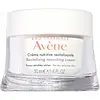What's inside
What's inside
 Key Ingredients
Key Ingredients

 Benefits
Benefits

 Concerns
Concerns

 Ingredients Side-by-side
Ingredients Side-by-side

Water
Skin ConditioningGlycerin
HumectantOctyldodecanol
EmollientParaffinum Liquidum
EmollientCetearyl Alcohol
EmollientDimethicone
EmollientIsododecane
EmollientMethyl Gluceth-20
HumectantPentylene Glycol
Skin ConditioningSilica
AbrasiveCetearyl Glucoside
EmulsifyingGlyceryl Stearate
EmollientPEG-100 Stearate
Benzoic Acid
MaskingCaprylic/Capric Triglyceride
MaskingEthylhexylglycerin
Skin ConditioningParfum
MaskingHydrogenated Starch Hydrolysate
HumectantPolyacrylate-13
Polyisobutene
Polysorbate 20
EmulsifyingRibes Rubrum Fruit Extract
TonicRubus Idaeus Fruit Extract
AstringentSodium Benzoate
MaskingSodium Hydroxide
BufferingSorbitan Isostearate
EmulsifyingTocopherol
AntioxidantTocopheryl Glucoside
EmollientVaccinium Myrtillus Fruit Extract
Skin ConditioningXanthan Gum
EmulsifyingWater, Glycerin, Octyldodecanol, Paraffinum Liquidum, Cetearyl Alcohol, Dimethicone, Isododecane, Methyl Gluceth-20, Pentylene Glycol, Silica, Cetearyl Glucoside, Glyceryl Stearate, PEG-100 Stearate, Benzoic Acid, Caprylic/Capric Triglyceride, Ethylhexylglycerin, Parfum, Hydrogenated Starch Hydrolysate, Polyacrylate-13, Polyisobutene, Polysorbate 20, Ribes Rubrum Fruit Extract, Rubus Idaeus Fruit Extract, Sodium Benzoate, Sodium Hydroxide, Sorbitan Isostearate, Tocopherol, Tocopheryl Glucoside, Vaccinium Myrtillus Fruit Extract, Xanthan Gum
Rosa Damascena Flower Water
MaskingWater
Skin ConditioningCaprylic/Capric Triglyceride
MaskingGlycerin
HumectantPPG-15 Stearyl Ether
EmollientC12-20 Acid PEG-8 Ester
EmulsifyingCoco-Caprylate/Caprate
EmollientPotassium Cetyl Phosphate
EmulsifyingCarbomer
Emulsion StabilisingPhenoxyethanol
PreservativeSaccharide Isomerate
HumectantCI 77891
Cosmetic ColorantEthylhexylglycerin
Skin ConditioningSodium Hydroxide
BufferingChlorphenesin
AntimicrobialMacadamia Integrifolia Seed Oil
Skin ConditioningOenothera Biennis Oil
EmollientChondrus Crispus Powder
AbrasivePropylene Glycol
HumectantBisabolol
MaskingPanthenol
Skin ConditioningGlycyrrhetinic Acid
Skin ConditioningSodium Hyaluronate
HumectantAcacia Decurrens Flower Wax
EmollientJasminum Grandiflorum Flower Wax
MaskingLilium Candidum Bulb Extract
Skin ConditioningNarcissus Poeticus Flower Wax
MaskingPEG-8
HumectantJasminum Officinale Oil
MaskingCitric Acid
BufferingCitronellol
PerfumingSodium Citrate
BufferingTocopherol
AntioxidantPelargonium Graveolens Oil
MaskingRosa Damascena Flower Oil
MaskingGeraniol
PerfumingBenzyl Benzoate
AntimicrobialAscorbyl Palmitate
AntioxidantLinalool
PerfumingEugenol
PerfumingAscorbic Acid
AntioxidantRosa Damascena Flower Water, Water, Caprylic/Capric Triglyceride, Glycerin, PPG-15 Stearyl Ether, C12-20 Acid PEG-8 Ester, Coco-Caprylate/Caprate, Potassium Cetyl Phosphate, Carbomer, Phenoxyethanol, Saccharide Isomerate, CI 77891, Ethylhexylglycerin, Sodium Hydroxide, Chlorphenesin, Macadamia Integrifolia Seed Oil, Oenothera Biennis Oil, Chondrus Crispus Powder, Propylene Glycol, Bisabolol, Panthenol, Glycyrrhetinic Acid, Sodium Hyaluronate, Acacia Decurrens Flower Wax, Jasminum Grandiflorum Flower Wax, Lilium Candidum Bulb Extract, Narcissus Poeticus Flower Wax, PEG-8, Jasminum Officinale Oil, Citric Acid, Citronellol, Sodium Citrate, Tocopherol, Pelargonium Graveolens Oil, Rosa Damascena Flower Oil, Geraniol, Benzyl Benzoate, Ascorbyl Palmitate, Linalool, Eugenol, Ascorbic Acid
 Reviews
Reviews

Ingredients Explained
These ingredients are found in both products.
Ingredients higher up in an ingredient list are typically present in a larger amount.
This ingredient is an emollient, solvent, and texture enhancer. It is considered a skin-softener by helping the skin prevent moisture loss.
It helps thicken a product's formula and makes it easier to spread by dissolving clumping compounds.
Caprylic Triglyceride is made by combining glycerin with coconut oil, forming a clear liquid.
While there is an assumption Caprylic Triglyceride can clog pores due to it being derived from coconut oil, there is no research supporting this.
Learn more about Caprylic/Capric TriglycerideEthylhexylglycerin (we can't pronounce this either) is commonly used as a preservative and skin softener. It is derived from glyceryl.
You might see Ethylhexylglycerin often paired with other preservatives such as phenoxyethanol. Ethylhexylglycerin has been found to increase the effectiveness of these other preservatives.
Glycerin is already naturally found in your skin. It helps moisturize and protect your skin.
A study from 2016 found glycerin to be more effective as a humectant than AHAs and hyaluronic acid.
As a humectant, it helps the skin stay hydrated by pulling moisture to your skin. The low molecular weight of glycerin allows it to pull moisture into the deeper layers of your skin.
Hydrated skin improves your skin barrier; Your skin barrier helps protect against irritants and bacteria.
Glycerin has also been found to have antimicrobial and antiviral properties. Due to these properties, glycerin is often used in wound and burn treatments.
In cosmetics, glycerin is usually derived from plants such as soybean or palm. However, it can also be sourced from animals, such as tallow or animal fat.
This ingredient is organic, colorless, odorless, and non-toxic.
Glycerin is the name for this ingredient in American English. British English uses Glycerol/Glycerine.
Learn more about GlycerinSodium Hydroxide is also known as lye or caustic soda. It is used to adjust the pH of products; many ingredients require a specific pH to be effective.
In small amounts, sodium hydroxide is considered safe to use. However, large amounts may cause chemical burns due to its high alkaline.
Your skin has a natural pH and acid mantle. This acid mantle helps prevent harmful bacteria from breaking through. The acid mantle also helps keep your skin hydrated.
"Alkaline" refers to a high pH level. A low pH level would be considered acidic.
Learn more about Sodium HydroxideTocopherol (also known as Vitamin E) is a common antioxidant used to help protect the skin from free-radicals and strengthen the skin barrier. It's also fat soluble - this means our skin is great at absorbing it.
Vitamin E also helps keep your natural skin lipids healthy. Your lipid skin barrier naturally consists of lipids, ceramides, and fatty acids. Vitamin E offers extra protection for your skin’s lipid barrier, keeping your skin healthy and nourished.
Another benefit is a bit of UV protection. Vitamin E helps reduce the damage caused by UVB rays. (It should not replace your sunscreen). Combining it with Vitamin C can decrease sunburned cells and hyperpigmentation after UV exposure.
You might have noticed Vitamin E + C often paired together. This is because it is great at stabilizing Vitamin C. Using the two together helps increase the effectiveness of both ingredients.
There are often claims that Vitamin E can reduce/prevent scarring, but these claims haven't been confirmed by scientific research.
Learn more about TocopherolWater. It's the most common cosmetic ingredient of all. You'll usually see it at the top of ingredient lists, meaning that it makes up the largest part of the product.
So why is it so popular? Water most often acts as a solvent - this means that it helps dissolve other ingredients into the formulation.
You'll also recognize water as that liquid we all need to stay alive. If you see this, drink a glass of water. Stay hydrated!
Learn more about Water